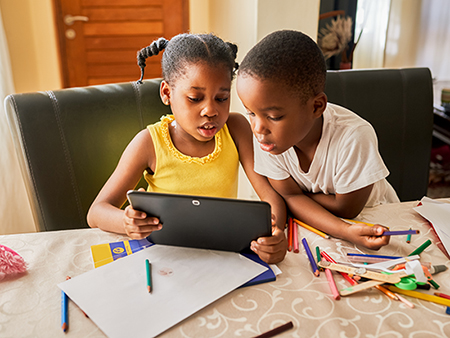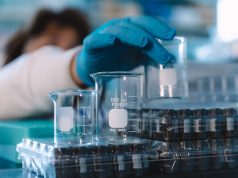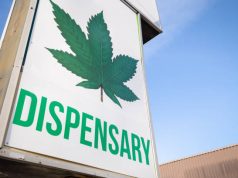UAB News
Studies have shown that summer learning loss is real and evident in our children. University of Alabama at Birmingham experts have suggestions for resources and activities to engage summer learning from home during the pandemic.
Using household items
Carla Marchant, visiting instructor in curriculum and instruction in the UAB School of Education, suggests the following ways to incorporate learning into everyday activities.
Plan a meal or bake cookies
“So much learning content can be tied to everyday things we do, and we can make it enjoyable,” Marchant said. “Following recipes and measuring leads to conversations, for instance if we need to double or halve a recipe — addition and subtraction. Telling time for baking or cooking —elapsed time; create your own recipe based on what you have and what you like.”
Incorporate household responsibilities
“Folding laundry, cleaning the floors, picking up with a different type of music playing in the background and dance. Time yourself. How long does it take? … Compare to the next time you fold a load of laundry,” Marchant said.
Play card games/dominoes
There are tons of ideas online depending on the child’s age: addition war, multiplication war, fractions, etc.
Marchant says to foster creativity by suggesting children come up with their own “homemade” physical activity equipment. Parents might initially provide them with empty plastic bottles of various sizes, cardboard boxes, a timer, or old/forgotten toys and equipment.
Electronic portal for assistance learning
Issues surrounding struggling readers at all levels impact literacy rates, according to Jennifer Summerlin, Ph.D., assistant professor in the University of Alabama at Birmingham School of Education. Lower literacy levels tend to come from summer reading loss, early reading instruction difficulties, identification of reading difficulties and dangers of retention in third grade, and readability of textbooks, among other issues.
UAB provides an online resource, Electronic Portal for Assistance Learning, to remediate student difficulties in literacy to help with reading comprehension, confidence, fluency, phonemic awareness and phonics. The unique resource connects reading difficulties with resources to improve literacy.
The portal is easy to operate. It starts with a series of literacy questions based on the skill level of the reader and the signs that the facilitator may see in the individual. Once a difficulty is determined, the facilitator can utilize the remediation tab to identify instructional strategies to help the child become a better reader. The instructional strategies offer links to resources and articles to help the facilitator overcome the difficulties in reading.
Resources fall into these categories:
- Research studies supporting the effectiveness of the instructional strategy
- Specific recommendations for using the instructional strategy for reading remediation
- Video demonstrations of the instructional strategy
- Online student interactives to practice using the instructional strategy
Visit the Electronic Portal for Assistance Learning website to learn more.
Science experiments you can conduct at home
Rosianna Gray, Ph.D., an assistant professor in the UAB College of Arts and Sciences, works with community partners to find ways to incorporate science into fun activities.
“With these activities, students are able to hone their skills in science, math, technology and reading,” Gray said. “Implementation and exposure to the wonderful world of STEM should be done at a young age to get a desired successful impact later in their academic path. Identifying engaging activities can make science enjoyable and fun for all ages.”
She suggests the following activities for parents and caregivers to try a fun activity with their children to open their minds to the world of science.
Can glue bounce? Fun with glue and borax
The objective of this experiment is to demonstrate the difference between a chemical change and physical change.
Physical changes are about energy and those changes that relate to solids, liquids or gases, such as an ice cube’s melting. Chemical changes are smaller and happen at a more intense level, such as color changes.
In conducting this experiment, children will see how physical changes are made when combining the two mixtures to create “flubber.” Chemical changes are shown through the use of heat in the form of a microwave.
Materials:
- Water
- Borax soap
- Microwave
- Glue
- Two beakers or containers, one of which should be microwave-safe
- Stirring rod
- Food coloring in the child’s favorite color
- Gloves (because this experiment can be messy)
Procedure:
Put 1.5 inches of water in container A. Add one teaspoon of Borax soap to container A. Heat the mixture in the microwave for one minute and set aside. Be careful as the mixture will be hot.
Put 1.5 inches of glue in container B, and add six teaspoons of water and 12 drops of food coloring. Add the contents of container A to the mixture in container B. Stir well. The combination makes “flubber.”
Can colors run? Fun with soap and colors
Materials:
- Six paper plates
- 1 percent milk
- 2 percent milk
- Half and half
- Buttermilk
- Whole milk
- Glue (to make a cool souvenir)
- Food coloring: green, blue, red and yellow
- Liquid dishwashing detergent
- Cotton swabs
Procedure:
Lay paper plates out in a straight line, one plate for each type of milk and glue. Pour various milks into the plates, enough to cover the bottom of each. Drop three or four drops of different food colorings into the center of the milk. Be careful not to mix the colors. Dip a cotton swab into the liquid dishwashing detergent and place it in the center of the food coloring drops. Watch and discuss what happens as each plate transitions to a beautiful piece of art.
Tasty bacteria: fun with milk, yogurt and heat
Microbes are used to produce a wide variety of foods through fermentation, a metabolic process that releases energy from a sugar or other organic molecule. The process can be carried out with or without oxygen. In dairy fermentation, or yogurt production, microorganisms use lactose and produce lactic acid without using oxygen.
Materials:
- Homogenized milk
- Nonfat dry milk
- Plastic cups
- Plastic spoons
- Foil
- Thermometer
- 100-milliliter graduated cylinder
- Plain yogurt
- Hot plate
Procedure:
Heat the milk to 80 degrees Celsius for 10 to 20 minutes, stirring occasionally. Do not let it boil. Cool milk to 65 degrees Celsius and add one teaspoon of nonfat dry milk per person. Stir to dissolve. Rapidly cool milk to about 45 degrees Celsius.
Inoculate each cup with one to two teaspoons of plain yogurt and cover with foil. Incubate the cups at 45 degrees Celsius for four to eight hours or until they are firm or custard-like. Cool the yogurt to about 5 degrees Celsius. Taste, add some type of flavor, like strawberries, peaches, granola, etc., and enjoy.
Here is how to convert Fahrenheit to Celsius:
- Determine the temperature in Fahrenheit.
- Subtract 32.
- Multiply the result by 5.
- Divide that answer by 9.
- Your final answer is the temperature in Celsius.
Here is how to convert Celsius to Fahrenheit:
- Multiply by 1.8 or 9/5.
- Add 32.
- Your final answer is the temperature in Fahrenheit.





